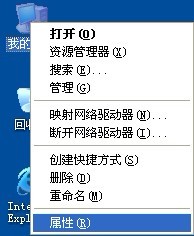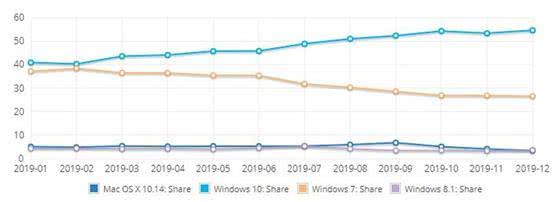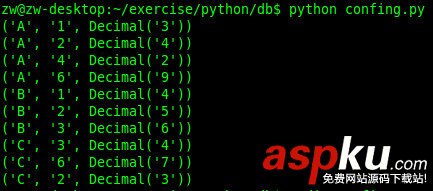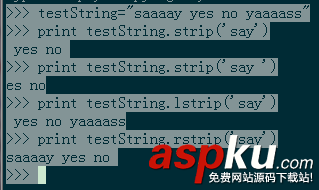來一個(gè)簡單的例子,看Python如何操作數(shù)據(jù)庫,相比Java的JDBC來說,確實(shí)非常簡單,省去了很多復(fù)雜的重復(fù)工作,只關(guān)心數(shù)據(jù)的獲取與操作。
準(zhǔn)備工作
需要有相應(yīng)的環(huán)境和模塊:
- Ubuntu 14.04 64bit
- Python 2.7.6
- MySQLdb
注意:Ubuntu 自帶安裝了Python,但是要使用Python連接數(shù)據(jù)庫,還需要安裝MySQLdb模塊,安裝方法也很簡單:
sudo apt-get install MySQLdb
然后進(jìn)入Python環(huán)境,import這個(gè)包,如果沒有報(bào)錯(cuò),則安裝成功了:
pythonPython 2.7.6 (default, Jun 22 2015, 17:58:13) [GCC 4.8.2] on linux2Type "help", "copyright", "credits" or "license" for more information.>>> import MySQLdb>>>
Python標(biāo)準(zhǔn)的數(shù)據(jù)庫接口的Python DB-API(包括Python操作MySQL)。大多數(shù)Python數(shù)據(jù)庫接口堅(jiān)持這個(gè)標(biāo)準(zhǔn)。不同的數(shù)據(jù)庫也就需要不同額模塊,由于我本機(jī)裝的是MySQL,所以使用了MySQLdb模塊,對(duì)不同的數(shù)據(jù)庫而言,只需要更改底層實(shí)現(xiàn)了接口的模塊,代碼不需要改,這就是模塊的作用。
Python數(shù)據(jù)庫操作
首先我們需要一個(gè)測試表
建表語句:
CREATE DATABASE study;use study;DROP TABLE IF EXISTS python_demo;CREATE TABLE python_demo ( id int NOT NULL AUTO_INCREMENT COMMENT '主鍵,自增', user_no int NOT NULL COMMENT '用戶編號(hào)', user_name VARBINARY(50) NOT NULL COMMENT '用戶名', password VARBINARY(50) NOT NULL COMMENT '用戶密碼', remark VARBINARY(255) NOT NULL COMMENT '用戶備注', PRIMARY KEY (id,user_no))ENGINE =innodb DEFAULT CHARSET = utf8 COMMENT '用戶測試表';INSERT INTO python_demo(user_no, user_name, password, remark) VALUES (1001,'張三01','admin','我是張三');INSERT INTO python_demo(user_no, user_name, password, remark) VALUES (1002,'張三02','admin','我是張三');INSERT INTO python_demo(user_no, user_name, password, remark) VALUES (1003,'張三03','admin','我是張三');INSERT INTO python_demo(user_no, user_name, password, remark) VALUES (1004,'張三04','admin','我是張三');INSERT INTO python_demo(user_no, user_name, password, remark) VALUES (1005,'張三05','admin','我是張三');INSERT INTO python_demo(user_no, user_name, password, remark) VALUES (1006,'張三06','admin','我是張三');INSERT INTO python_demo(user_no, user_name, password, remark) VALUES (1007,'張三07','admin','我是張三');INSERT INTO python_demo(user_no, user_name, password, remark) VALUES (1008,'張三08','admin','我是張三');
Python代碼
# --coding=utf8--import ConfigParserimport sysimport MySQLdbdef init_db(): try: conn = MySQLdb.connect(host=conf.get('Database', 'host'), user=conf.get('Database', 'user'), passwd=conf.get('Database', 'passwd'), db=conf.get('Database', 'db'), charset='utf8') return conn except: print "Error:數(shù)據(jù)庫連接錯(cuò)誤" return Nonedef select_demo(conn, sql): try: cursor = conn.cursor() cursor.execute(sql) return cursor.fetchall() except: print "Error:數(shù)據(jù)庫連接錯(cuò)誤" return Nonedef update_demo(): passdef delete_demo(): passdef insert_demo(): passif __name__ == '__main__': conf = ConfigParser.ConfigParser() conf.read('mysql.conf') conn = init_db() sql = "select * from %s" % conf.get('Database', 'table') data = select_demo(conn, sql) pass fetchall()字段特殊字符過濾處理
最近在做數(shù)據(jù)倉庫的遷移工作,之前數(shù)據(jù)倉庫的數(shù)據(jù)都是用的shell腳本來抽取,后來換了python腳本.
但是在把數(shù)據(jù)抽取存放到hadoop時(shí),出現(xiàn)了一個(gè)問題:
由于數(shù)據(jù)庫字段很多,提前也不知道數(shù)據(jù)庫字段會(huì)存儲(chǔ)什么內(nèi)容,hive建表是以/t/n做分隔,這就導(dǎo)致了一個(gè)問題,如果mysql字段內(nèi)容里面本身含有/t/n,那么就會(huì)出現(xiàn)字段錯(cuò)位情況,并且很頭疼的是mysql有100多個(gè)字段,也不知道哪個(gè)字段會(huì)出現(xiàn)這個(gè)問題.
shell腳本里的做法是在需要抽取的字段上用mysql的replace函數(shù)對(duì)字段進(jìn)行替換,例如,假設(shè)mysql里的字段是column1 varchar(2000),那么很可能就會(huì)出現(xiàn)有特殊字符的情況,在查詢的sql語句里加上
select replace(replace(replace(column1,'/r',''),'/n',''),'/t','')
之前一直是這么干的,但是這樣寫sql特別長,特別是有100多個(gè)字段,也不知道哪個(gè)有特殊字符,只要都加上.
所以在python中對(duì)字段不加處理,最終導(dǎo)致hive表字段對(duì)應(yīng)出現(xiàn)偏差,所以在python里從mysql查詢到的字段在寫到文件之前需要對(duì)每個(gè)字段進(jìn)行過濾處理
看個(gè)例子,我就以mysql測試為例,首先建一張測試表
CREATE TABLE `filter_fields` ( `field1` varchar(50) DEFAULT NULL, `field2` varchar(50) DEFAULT NULL, `field3` varchar(50) DEFAULT NULL, `field4` varchar(50) DEFAULT NULL, `field5` varchar(50) DEFAULT NULL, `field6` varchar(50) DEFAULT NULL) ENGINE=InnoDB DEFAULT CHARSET=utf8;
有六個(gè)字段,都是varchar類型,插入新數(shù)據(jù)可以在里面插入特殊字符.簡單插入條數(shù)據(jù)測試看看:
insert into filter_fields(field1,field2,field3,field4,field5,field6) VALUES('test01','test02','test03','test04','test05','test06');insert into filter_fields(field1,field2,field3,field4,field5,field6) VALUES('test11/ntest11','test12/n/n','test13','test14','test15','test16');insert into filter_fields(field1,field2,field3,field4,field5,field6) VALUES('test21/ttest21','test22/ttest22/ttest22','test23/t/t/t','test4','test5','test6');insert into filter_fields(field1,field2,field3,field4,field5,field6) VALUES('test21/rest21','test22/r/rest22/r/rest22','test23/r/r/r','test4','test5','test6'); 其中數(shù)據(jù)里插入的特殊字符,可能連在一起,也有不連在一起的.
python測試代碼:
# coding=utf-8import MySQLdbimport sysdb_host = '127.0.0.1' # 數(shù)據(jù)庫地址db_port = 3306 # 數(shù)據(jù)庫端口db_user = 'root' # mysql用戶名db_pwd = 'yourpassword' # mysql用戶密碼,換成你的密碼db_name = 'test' # 數(shù)據(jù)庫名db_table = 'filter_fields' # 數(shù)據(jù)庫表# 過濾sql字段結(jié)果中的/t/ndef extract_data(table_name): try: conn = MySQLdb.connect(host=db_host, port = db_port, user=db_user, passwd = db_pwd, db = db_name, charset = "utf8") cursor = conn.cursor() except MySQLdb.Error, e: print '數(shù)據(jù)庫連接異常' sys.exit(1) try: sql = 'select * from %s;'%(table_name) cursor.execute(sql) rows = cursor.fetchall() print '====字段未過濾查詢結(jié)果====' for row in rows: print row print '====字段過濾之后結(jié)果====' rows_list = [] for row in rows: row_list = [] for column in row: row_list.append(column.replace('/t', '').replace('/n', '').replace('/r', '')) rows_list.append(row_list) print rows_list[-1] # [-1]表示列表最后一個(gè)元素 return rows_list except MySQLdb.Error, e: print '執(zhí)行sql語句失敗' cursor.close() conn.close() sys.exit(1)if __name__ == '__main__': print 'begin:' rows = extract_data(db_table) pass 看看輸出結(jié)果:
字段未過濾查詢結(jié)果
(u'test01', u'test02', u'test03', u'test04', u'test05', u'test06')(u'test11/ntest11', u'test12/n/n', u'test13', u'test14', u'test15', u'test16')(u'test21/ttest21', u'test22/ttest22/ttest22', u'test23/t/t/t', u'test4', u'test5', u'test6')(u'test21/rest21', u'test22/r/rest22/r/rest22', u'test23/r/r/r', u'test4', u'test5', u'test6')
字段過濾之后結(jié)果
[u'test01', u'test02', u'test03', u'test04', u'test05', u'test06'][u'test11test11', u'test12', u'test13', u'test14', u'test15', u'test16'][u'test21test21', u'test22test22test22', u'test23', u'test4', u'test5', u'test6'][u'test21est21', u'test22est22est22', u'test23', u'test4', u'test5', u'test6']
可以看到,制表符,換行符,回車都被過濾了.
建議:最后說點(diǎn)題外話,不要小視/r,回車符.很多人以為回車符就是換行符,其實(shí)不是的,/r表示回車符,/n表示新行.之前代碼里其實(shí)是過濾掉了/t/n的,但是抽取的數(shù)據(jù)還是不對(duì),后來看了源碼之后才發(fā)現(xiàn),原來是沒有過濾/r,就這個(gè)不同導(dǎo)致了很多數(shù)據(jù)抽取不對(duì).



















